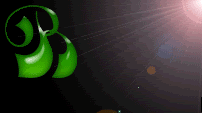Monosaccharides are carbohydrates in the form of simple sugars. As disaccharides, monosaccharides taste sweet, water soluble, and crystalline.
Monosaccharides are classified by the number of carbon atoms they
 contain (trioses, tetrosa, pentose, hexose, and heptose) and active group, which can be aldehyde or ketone. These are then combined, eg aldohexoses and ketotrioses. Further, each carbon atom that binds the hydroxyl group (except at both ends) are optically active, resulting in several different carbohydrates although essentially the same structure. For example, galactose is aldohexoses, but has different properties from glucose because the atoms are arranged differently.
contain (trioses, tetrosa, pentose, hexose, and heptose) and active group, which can be aldehyde or ketone. These are then combined, eg aldohexoses and ketotrioses. Further, each carbon atom that binds the hydroxyl group (except at both ends) are optically active, resulting in several different carbohydrates although essentially the same structure. For example, galactose is aldohexoses, but has different properties from glucose because the atoms are arranged differently.Another example:
* Trioses: glyceraldehyde and dihydroxyacetone
* Tetrosa: eritrosa
* Pentoses: lyxose, ribose, and deoxyribose
* Hexoses: idosa, glucose, fructose, and galactose
* Heptose:
Glucose
Glucose is a aldohexoses, also known as dextrose because it plays right field polarization. Glucose is the main component of blood sugar, arrange 0.065 to 0.11% of our blood.
Glucose can be formed from the hydrolysis of starch, glycogen, and maltose. Glucose is very important for us because our body cells use it immediately to produce energy. Glucose can be oxidized by gently oxidizing agent such as reagent Tollens so often referred to as reducing sugars.
Galactose
Galactose is a aldohexoses. This monosaccharide rarely found free in nature. Generally binds to glucose in the form of lactose, the sugar found in milk. Galactose has a taste less sweet than glucose and less soluble in water. As with glucose, galactose is also a reducing sugar.
Fructose
Fructose is a heksulosa, also known as levulose because it plays into the left-field polarization. Is the only heksulosa found in nature.
Fructose is the sweetest sugar, found in honey and fruit together with glucose.
Fructose can be formed from hydrolysis of a disaccharide called sucrose. Just as glucose, fructose is a reducing sugar.













.jpg)